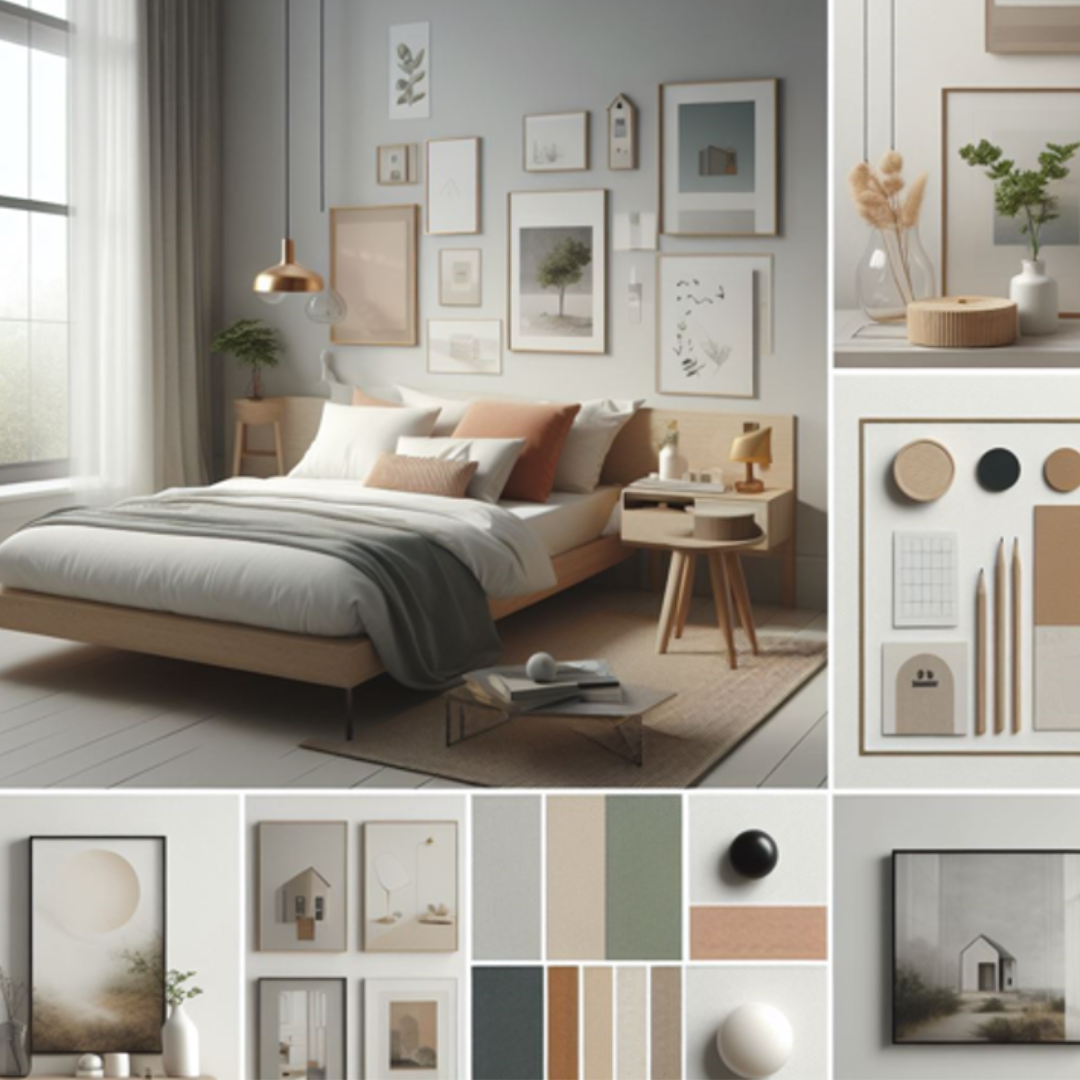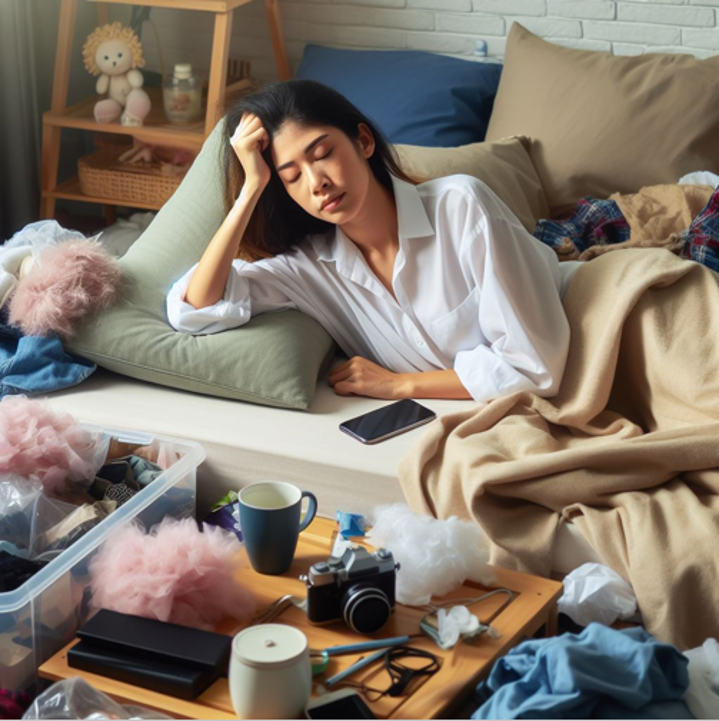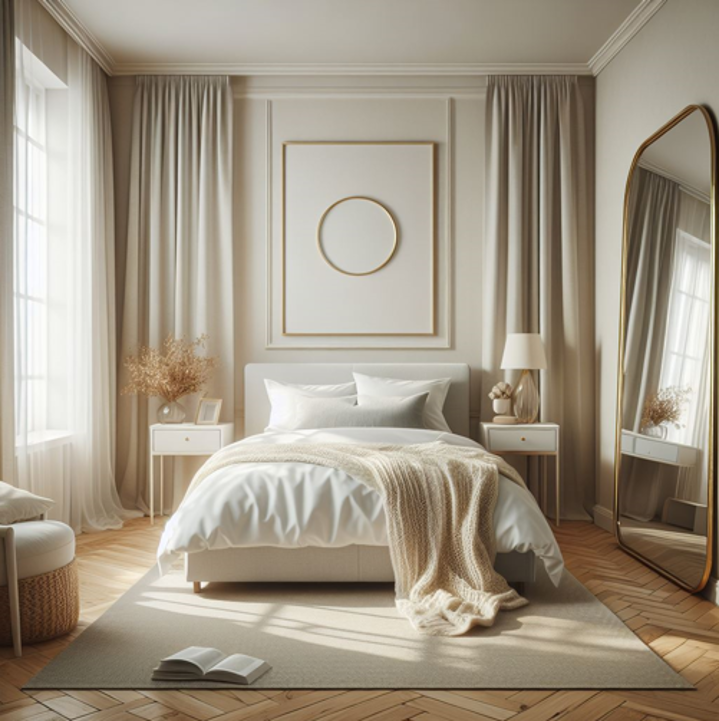Guest Blog From, Indiana Lee
Getting a good night’s sleep can do wonders for your mental and physical health. Waking up after a solid 7 - 9 hours of high-quality rest can increase your mental sharpness, help you fight off illness, and give you a much-needed mood boost.
However, if you sleep in a small bedroom, you may find that the space starts to feel cluttered and claustrophobic before bed. This is a real issue, as the environment where you sleep has a massive impact on the quality of your rest.
Fortunately, you can make use of some savvy design choices to cut down on mess and keep your space clean. You can also invest in some upgrades to improve the quality of the air you’re breathing and enhance your temperature control.
Understanding Sleep Quality
Major health organizations like the CDC recommend that adults get 7 - 9 hours of sleep every night. However, sleep researchers are beginning to understand that the quality of your sleep is just as important as the duration of the time that you spend in bed. This is because poor-quality sleep can lead to health issues like:
Sore jaw or teeth.
Mood swings and anxiety.
Acne and breakouts.
Diminished cognitive function.
Poor memory.
Failing to get good-quality shut-eye can have long-term negative physical health consequences, too. Your body needs high-quality sleep to rest and recover properly and will struggle if you are constantly tossing and turning in the night. This is particularly important if you’re trying to lead a healthier lifestyle and have recently started exercising.
A good night’s sleep will help your body adapt to exercise and give you the energy to sustain your new healthy habit.
Light Management
The science of sleep and light is clear. Over thousands of years, our sleep habits have adjusted to help us fall asleep when the sun sets. However, modern life is filled with artificial light that can make good quality shut-eye hard to find.
This is a serious issue, as light from phones or screens that enter the eye disrupts your circadian rhythm and can throw your entire sleep schedule off kilter.
If you’re sleeping in a small bedroom, consider keeping phones and tablets out of the room. A notification in the middle of the night is sure to wake you up in a small space and disrupt your sleep cycle. Instead, consider investing in warm lighting and dimmers. You shouldn’t need many lights to brighten the space up and may find that a single bedside lamp is more than enough.
When sleeping in a small bedroom, you may find that the windows do not let enough natural light in when the sun rises. This can become a problem if you struggle with oversleeping. Fortunately, you can rectify this issue by installing a large mirror opposite your window.
This will increase the natural light levels in your room and help you wake up feeling refreshed and ready to take on the day.
Minimizing Clutter
Clutter is a serious issue in small bedroom spaces. Failing to keep your space tidy is sure to cause excess stress and undermine your ability to switch off when the lights go out. Fortunately, there are plenty of modern solutions that can help you clean your space and declutter your small bedroom.
If you’ve been struggling with poor sleep and have a cluttered room, set aside a full day to go back to the drawing board and redesign your small bedroom with rest in mind by:
Use feng shui principles to reposition your bed to get a full view of the room;
Leave space on either side for small tables;
Remove reminders of work or stress;
Charge your phone outside of the bedroom overnight;
Move under-bed storage out of sight to give the room a relaxed feel.
These steps reduce visual clutter and bring down your stress levels.
Even simple changes, like storing your pillowcases and bed sheets somewhere else, can have a profound impact on your peace of mind while sleeping. Keeping modern gadgets out of a small bedroom can help you build a better sleep environment and help you focus on getting some high-quality shut-eye, too.
Creating a Sleep Environment
Once you’ve decluttered, you can start adding elements back into your small bedroom. Start with simple changes, like installing soothing scents and essential oils.
Smells like lavender and chamomile are associated with rest and will help you unwind quickly after a long day at work. They don’t take up any space, either, meaning you can decorate however you see fit.
Rather than spending all your cash on prints and canvas photography, consider investing in a high-quality mattress. You can’t suddenly increase the square footage of your bedroom, but you can make sure the surface you sleep on is suited to your sleep style. Keep your head in a neutral position throughout the night and double-check that your spine is properly supported.
Small rooms sometimes feel stuffy. Address this issue by improving airflow in your room. This may mean you need to crack a few upstairs windows while you sleep, or you can invest in a silent cooling fan to encourage cool air to enter your bedroom. This refreshes the air in your room, keeps the temperature around 65F, and helps you breathe easier.
Similarly, you may want to invest in a dehumidifier during the summer and a humidifier during the winter to ensure that the air is easy to breathe. You can further combat stuffiness and help your bedroom feel larger by ditching heavy-set bed frames in favor of modern, minimalist setups. This allows your room to breathe and gives you space to move. If possible, avoid the temptation to over-decorate the space and leave the room as blank as possible. This makes it easier to clean the space which will improve air quality by removing dust particles.
Conclusion
Taking an intentional approach to interior design is key when laying out a small bedroom. Intentional design choices, like repositioning your bed, will help the room feel spacious and improve your ability to keep the space tidy. Consider investing in a few useful items like silent fans that improve airflow and cool your room. This is key, as you need to breathe easily to benefit from high-quality rest at night.
Read Next:
Neglected Nooks: Creative Solutions For Tricky 'Dead Spaces' In Your Home
Unlock the Potential of Your Home's Dead Spaces: Turn Forgotten Corners into Stylish Stand Outs! We’ll show you how to breathe new life into neglected areas. From cozy window nooks to creative under-stair solutions, learn the secrets to maximizing space and injecting personality into every corner of your home.
Join the Fun!
If you enjoyed this post and you want to keep seeing my weekly blog, the best way to do that is to subscribe.
You can subscribe by downloading my 11 Secrets Only Designers Know to Make Your Space Rock. If you’re curious about how decorators and designers make a home look magazine ready, you’ll love taking a gander at these 11 secrets. You’ll learn how to style your room from the floor up and it will work for ANY space you have.
I write about small space design and decorating, sustainable furniture options, positive self care and a variety of do-it-yourself home décor.
I’d love to connect with you!
“Michael Helwig was top-notch, very professional and responsive to my needs. He allowed me time to explore ideas and try out a variety of combinations until we found the perfect fit. Michael provided detailed information and offered beautiful ideas to make my dream living room become a reality. The furniture he sourced has totally transformed my living room space. Everyone that has seen my new living room has one word, WOW! A special thank you to Michael for a wonderful experience.”
“Michael was very knowledgeable and guided us, with great patience and good humor, through the process of designing our dining room and helping us find the perfect sleeper sofa. He offered really helpful advice when we asked questions - which was often - but at no time did we ever feel pushed. He helped me when I felt like I couldn’t make one more decision. When my new furniture finally arrived I realized everything down to the pillows was perfect. I couldn’t be happier!”
The opinions and views expressed in any guest blog post do not necessarily reflect those of Michael Helwig Interiors or its Principal, Michael Helwig. Michael Helwig Interiors, and Michael Helwig, do not have any affiliations with any products or services mentioned in the article or linked to therein. Guest Authors may have affiliations to products mentioned or linked to in their articles or bios.
Indiana Lee is a passionate writer and avid puzzle enthusiast hailing from the serene landscapes of the Pacific Northwest. With a deep appreciation for aesthetics and a strong preference for designs that seamlessly blend comfort and functionality, she brings a unique perspective to the world of interior decor. Connect with her on LinkedIn.














